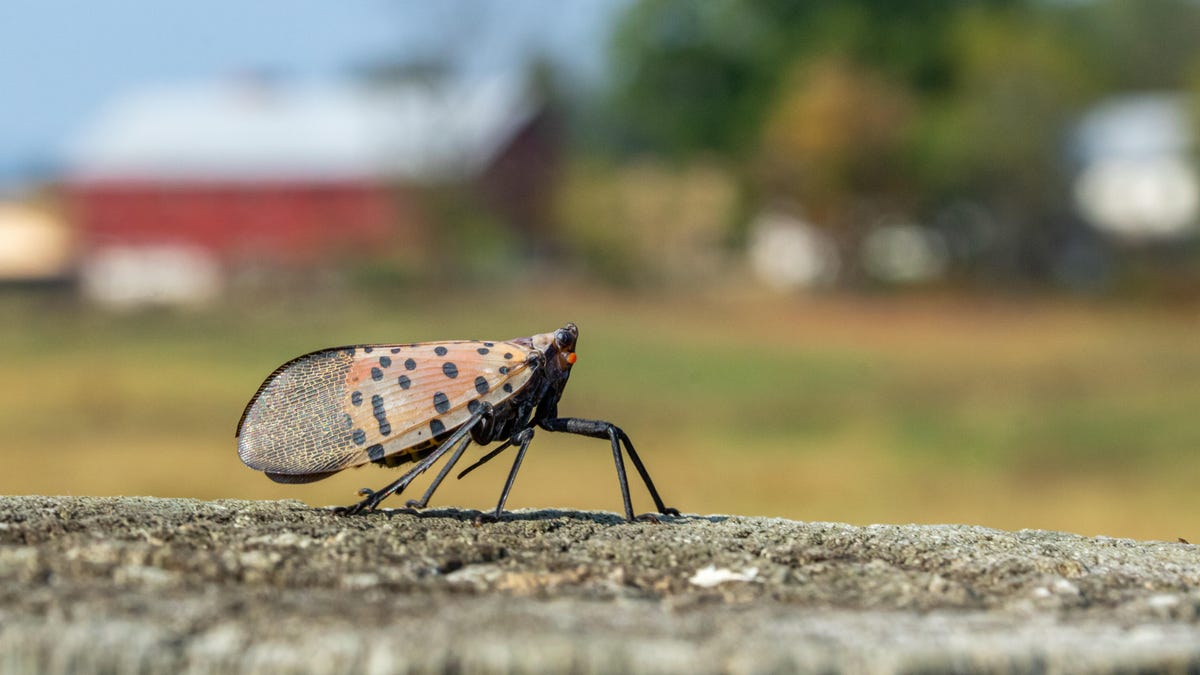California Vineyards Threatened by Wrath of Grape-Killing Bugs

A spotted lanternfly.
What's happening
A pesky critter called the spotted lanternfly could invade beloved California vineyards as soon as 2027.
Why it matters
The spotted lanternfly is known to destroy and feed on a variety of fruits, particularly stone-fruit like grapes, deeply threatening the multi-billion dollar California wine-making industry.
A polka-dotted planthopper is threatening your evening glass of syrah.
It's named the spotted lanternfly -- and it's truly a menace. This odd little bug feeds on a wide range of fruits and trees and is often charged with the crime of destroying crops by exuding what's called a "honeydew" that fosters toxic mold. Needless to say, it causes absolute mayhem among agricultural communities.
The situation is, in fact, severe enough to prompt organizations like the Pennsylvania Department of Agriculture to urge super aggressive measures like "If you see a spotted lanternfly… immediately report it online or via phone by calling 1-888-4BADFLY." Even the US Department of Agriculture said that if you're found in an area known to have a spotted lanternfly population, don't just swat them.
"Crush them and scrape them off," the department said.
Scientists also had some ominous news for winemakers, saying in a study published Wednesday in the journal Communications Biology that the spotted lanternfly is likely to invade California's famous vineyards as soon as 2027 -- and the spotted lanternfly really (really) loves grapes.
"This is a big concern for grape growers; it could lead to billions of dollars of losses in the agricultural sector," Chris Jones, a researcher with the North Carolina State Center for Geospatial Analytics and lead author of the study, said in a statement. "With this study, we have a baseline that we can use to evaluate the effect of different management strategies."
By using complex computer simulations, Jones and fellow researchers found strong evidence that the spotted lanternfly has a high probability of reaching California -- the state responsible for 82% of the nation's grapes -- by 2033 and a lower, but notable, likelihood of getting there as soon as 2027.
"When we say there is a 'high' probability of reaching those counties, we mean there are multiple counties that have a probability of more than 50%," Jones said.
And, though Jones said it's hard to say in advance what the spotted lanternfly's exact impact will be on the grape-producing regions of the West Coast, "In Pennsylvania," he said, "we've seen vineyard losses from the double whammy of cold and from spotted lanternflies feeding on the vines."
Jones also said that "we do know producers can also experience losses because of the mold growth alone."
First spotted in Asia, the notorious spotted lanternfly has hitchhiked across the world by attaching its eggs to outdoor gear, the clothing of unfortunate bystanders and tree bark in transport -- eventually, it made its way to the US East Coast. It's currently found in 11 states, including Connecticut, Delaware, Indiana, Maryland, Massachusetts, New Jersey, New York, Ohio, Pennsylvania, Virginia and West Virginia.
To reach its projection that California is soon to be added to that list, the new study's team paid special attention to the critter's unique mechanism of travel. They tracked the routes of vehicles and shipping material likely to give the insect a home, in addition to other factors, between 2015 and 2019. 2014 markes when the bug was first seen in the US.
"The main reason we included proximity to the railroad network in our model is because it is highly correlated with long-distance dispersal," Jones said. Beyond that, the computer simulations accounted for the location of the spotted lanternfly's favorite breeding grounds. It's ironically called the tree of heaven, and it unfortunately grows right near highways and rail lines with cars and trains traveling throughout the country.
Excellent objects for spotted lanternfly voyagers to catch a ride on.
"We hope this helps pest managers prepare," Jones said of the study as a whole. According to the team, officials can create hypothetical management scenarios to see how different methods fare against the pesky lanternfly. "If they can start early surveillance, or start treating as soon as the spotted lanternfly arrives, it could slow the spread to other areas," Jones added. "[Winemakers] could also preemptively remove the tree of heaven around vineyards."

